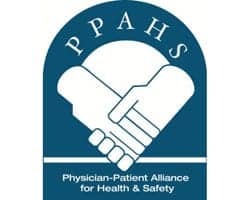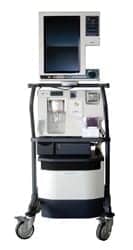Over the years, anesthesia equipment has evolved from simple pneumatic devices to sophisticated computer-based systems, but the basic objective remains the same: to safely put someone to sleep and wake them up again.
“There have been changes in how we service machines and in how they are manufactured, but the basics are still there,” says Gail Larkin, CE, who manages the service and maintenance for the University of Connecticut Health Center, Farmington, Conn. “There are still flowmeters to regulate how much anesthetic agent is going to the patient, and there still has to be a ventilator on the side plus a bag to manually ventilate the patient.”

There also are the same risks that have always existed when placing a patient under anesthesia: Should the equipment fail, the impact on the patient could be fatal. Avoiding such a risk is where the advanced skills of biomedical technicians come in.
In general, anesthesia machines mix the correct concentrations of gas and drugs to be inhaled and exhaled by the patient, which causes the patient to lose consciousness. Anesthetic gas affects the nervous system and numbs the nerve pathways. Patients remain unconscious during an operation, are immobile and might require breathing support, are free from memory, and have no sensation.
Wall outlets or cylinders supply air, oxygen, and nitrous oxide. Pressure regulators reduce the pressures, which are then passed through an O2 failure alarm. Flowmeters control the flow of gas, which is mixed and passed over a vaporizer containing the anesthetic agent. The gas then goes through an overpressure relief valve and back flow valve, then to the common gas outlet, ready to be given to the patient. Expired gas can be stripped of CO2 and recirculated, or “scavenged” out of the room.
New Skills Needed
Biomeds keep anesthesia machines and vaporizers in good working condition through diligent preventive maintenance (PM), which must be at 100% every month. Consistent upkeep and testing reduces anesthetic gas leaks, maintains optimal performance of scavenging equipment, and ensures that the appropriate percentage of anesthetic is being delivered.
As critical as PM is with any piece of medical equipment, advances in anesthesia technology have reduced the number of checks required by the biomed, such as oiling the respirometer or greasing parts of the machine.
“The older machines could easily take 4 hours for an annual PM, because you basically had to rebuild the ventilator once every few years,” says Gordon Radke, clinical engineering technical analyst intermediate for Carolinas Health Care System (CHCS), Granite Falls, NC.
“The newer machines are much more simplified in that area, and I can do a PM in half that time,” he adds.
But those same advances mean that today’s biomedical technicians require a thorough understanding of pneumatics, electronics, and computer science to troubleshoot potential problems with the technology.
With the older machines, for example, biomeds could tell that the respirometer was not reading correctly, and since it was one piece, they could take it off and replace it. Now, according to Larkin, that same part is a sensor inside the machine with software controls, and biomeds need to know where it is inside the machine, as well as how it fits into the system, in order to fix it.
“It used to be that you could follow the process with your eyes very easily, but now one manufacturer has gone to an enclosed system,” Larkin says. “Unless biomeds have attended the school given by the manufacturer, they won’t be able to figure out where a leak is in the system and they won’t be able to do troubleshooting because they need to know how to do a number of test fixtures. You can’t even get the service manuals without going to the school.”
Radke does the majority of PMs on the 50-plus Datex-Ohmeda Aestivas in use at CHCS. “The newer Datex-Ohmeda machines are very user-friendly, with a low repair rate, and that makes them easy for a biomedical technician to troubleshoot,” he says.
Even with a user-friendly system, biomeds still need training on those systems to successfully conduct PM and troubleshooting as the manufacturer requires. For instance, all anesthesia machines have mandatory vaporizer calibrations to ensure accurate delivery of the anesthetic agent. The Aestiva uses the Link 25 Proportioning system, which automatically increases oxygen flow to prevent delivery of a hypoxic mixture.
“The PM calls for us to turn the system on and make sure it’s ventilating with the nitrous hooked up, then turn off the gas on the auxiliary tank and watch all the levels lower proportionally,” Radke says. “If it’s working correctly, the oxygen will be the last one to go down. That means if the oxygen goes out for the hospital, the patient will not be put into jeopardy.”
In terms of troubleshooting, Radke says there are some common areas that he knows to check right off the bat. For instance, many problems are due to poor flow sensors or moisture in the system. The buildup of moisture in the machine can cause water droplets to form on the flow sensors, which the central processing unit interprets as reverse flow. Moisture that stays in the system also can get down to the sensor interface board (SIB). If moisture penetrates the SIB, time is needed for it to dry out or it is replaced, which can cost $1,500.
To avoid such problems, the certified registered nurse anesthetists (CRNAs) are urged to use the drain plug and drain the machines between cases, and to change the flow sensors between cases as well.
Factoring in User Error
An important part of troubleshooting anesthesia equipment involves recognizing when the problem is user error rather than mechanical error. Understanding how comfortable the physicians and CRNAs are with the newer technology they are using can help biomeds make that call.
“I still work with physicians who remember using ether,” Larkin says. “Now they are standing in front of something that’s software-driven.”
At least one manufacturer has developed a machine that uses an LED bar that increases and decreases with flow, rather than a mechanical flowmeter. Another manufacturer created a vaporizer system that would snap in and snap out so the reservoir’s anesthetic agent could be changed easily.
“That meant you could have six different agents and still need only one vaporizer,” Larkin says. “It was a good idea because it saved money, but the anesthesiologists had a hard time making the jump initially. Punching computer buttons is not easy for the older physicians to do. They still see this as an art, while the newer physicians watch the numbers on the screen and respond to those. It falls on the biomeds to know what all those buttons do in order to undo operator errors.”
“If there is a problem with a large leak in a machine in the OR (operating room), I won’t troubleshoot until I can examine the operators’ procedure and settings in order to rule out user error,” Radke says. “The most common problem I see relates to flow sensors, and sometimes that is because they are not snapped in correctly. Anytime a connection is not made all the way, we can get a communication error between the flow sensor and the computer.
“Ultimately, the doctors and the CRNAs are my customers,” he continues. “When they have a problem, it’s my job to try and fix it.”
Often, the only way to do that is for Radke to be able to visit the OR and observe the equipment while it is in use.
Making the Clinical Leap
“We have to be able to make that clinical jump,” Radke says. When an anesthesia machine is taken to the biomed department for repair and the biomeds are unable to find a problem, the equipment will be taken back to the OR, where it is very likely that whatever error occurred will occur again.
“This is an ongoing learning process for both biomeds and the CRNAs. CRNAs do keep their techniques consistent as much as possible for safety standards, but it helps to be able to observe the anesthesia machine in use in the operating room.”
For instance, Radke once tracked a “System Leak?” error message to a hairline crack in the flow sensor. “It occurred when they raised the head of the OR table and it hit the sensor,” he says. “It didn’t look like anything had happened to the sensor, but a hairline crack is all you need to create an error message.”
“I prefer that physicians call me when they are having a problem so I can go in and see what’s wrong,” Larkin agrees. “Sometimes it’s the patient and not the machine. For example, maybe the patient’s lungs are very rigid and the machine is trying to compensate for that. There are ways around that problem. While I can’t touch the machine while the patient is on it, I can guide them on how to change the way the machine is acting.”

Preparing for the Future
Anesthesia equipment is getting more and more complicated, not less, and biomeds will have to keep pace with that progression in order to continue doing their jobs well.
“We haven’t gotten to the point where we need to hook up our laptops to the machine to do troubleshooting yet, but I’m sure it’s coming,” Larkin says. “Is that a challenge? For some of us, yes. Just like the anesthesiologists, some of us have been around for a long time, but we have to adjust to using the laptop instead of having a book with schematics.”
To meet that challenge, biomeds need to increase their clinical knowledge and spend more time addressing issues of customer service.
“Most of the things we get called on we could take care of on the phone, but the CRNAs don’t have time to fix something when they have a patient on the table,” Radke says. “What is important to them is having someone come up to the operating room to address the problem directly.
“If the CRNAs think there’s an issue with safety, they call me and I fix it,” he continues. “It’s very important to me that the CRNAs and the surgeons have faith in me to do my job, and I strive for that level of trust. My motivation is taking pride in what I do and making sure my job is done correctly.”
Liz Finch is a contributing writer for 24×7. For more information, contact us at [email protected].




